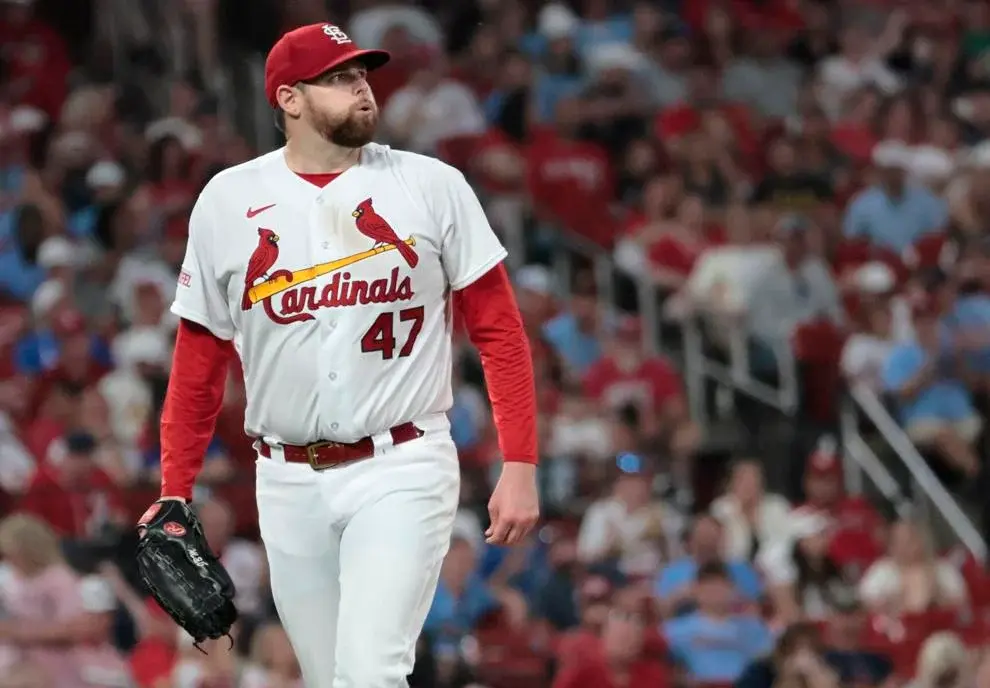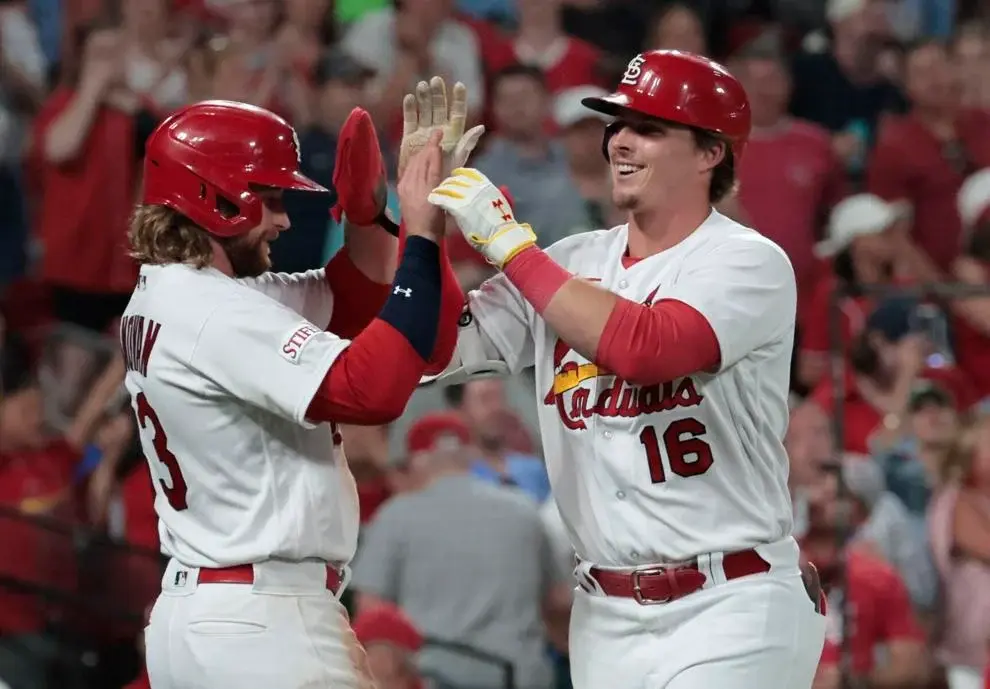The day before the first round of the NHL Draft last week in Nashville, Islanders general manager Lou Lamoriello shared the realities and frustrations of trying to navigate what has been a nearly flat salary cap for the past half-decade. The recently confirmed upper limit of $83.5 million for the 2023-24 season will be only $2 million higher than what it was five years ago in 2019-20, making it difficult lately for managers throughout the NHL to annually alter their rosters all that much.
The blatant inference was some of those contracts agreed to before the pandemic wouldn’t have been done had everyone known what was on the horizon, and the Islanders are no different than just about every other team in that regard.
“We’re in this position because of what happened with assumptions, which is a real bad word, of where the cap would be,” Lamoriello said. “So some of the signings that we made three years ago — and I’m talking universally, everyone — we would not have done because in your planning you also know what the progression will be … because of where the revenues are going.”
The suggestion seemed to be that because the Islanders didn’t have a ton of salary-cap space heading into free agency, they might be forced to see some of the players they hoped to retain instead depart while having to settle for cheaper (aka lesser) options.
Well, no. The club signed Ilya Sorokin, Scott Mayfield, Pierre Engvall and Semyon Varlamov to more than a quarter-century’s worth of new contracts, making the assumption — that “real bad word” — that the cap will significantly rise over the next few years. To recap: Sorokin got an eight-year deal with an $8.25 million AAV; Varlamov, four years with a $2.75 million AAV; Mayfield, seven years with a $3.5 million AAV; and Engvall, seven years, with a $3 million AAV.
The salary cap is expected to rise by $4 million to $87.5 million in 2024-25 and could even balloon to $92 million by 2025-26. Lamoriello’s assumption does seem pretty safe.
Of course, all long-term contracts have risks. Sorokin came in second place in voting for the Vezina Trophy last season, and his salary beginning in 2024-25 will probably be below market value. But goalies are notoriously unpredictable. Varlamov, too, while a solid backup, is already 35 years old.
Engvall and Mayfield were both important cogs in the Islanders’ late-season surge to get into the playoffs, but the former has played only a handful of games on Long Island after he was acquired in March, and the latter is a mostly third-pair defenseman who plays a physical game that could take a toll on his body — and he’s already past 30.
All of that led to Lamoriello taking a fair amount of heat in the mediasphere for keeping the Islanders together at all costs. While no one was too critical of the Sorokin deal — after all, he’s still making much less than Sergei Bobrovsky ($10 million) and Andrei Vasilevskiy ($9.5 million) — a case can be made that the others are actually too long.
And, yeah, maybe they are. We don’t have a crystal ball here.
But let’s take a broader look.
In this age of instant analysis, in which there are a handful of models that assert to predict a player’s future and how his contract ages, it’s sometimes easy to overlook how every team’s circumstances are different. That’s not to say that kind of statistical analysis isn’t valuable and insightful; it’s just one of many things to consider. But there are others.
When it comes to the four players the Islanders signed, it’s important to remember how each of them fits into what Lamoriello and the organization are trying to achieve. That is, they still believe this is a group that can compete for a Stanley Cup.
And is that a truly wild assumption? It’s less than two years since some were picking the Islanders to win a championship. Yes, the roster is a bit older than it was then. But along with the emergence of Sorokin, the team added Bo Horvat and is seemingly looking for another scorer, perhaps even Alex DeBrincat. From Feb. 19 through the end of the 2022-23 regular season, the Islanders’ .652 points percentage was tied for 10th in the league — with the Eastern Conference champion Florida Panthers, who finished eighth to the Islanders’ seventh in the standings.
We already went over whether the Islanders and Lamoriello’s philosophy is logical in this age of dynamic offenses and average goalies capturing the Stanley Cup. There’s an argument that the Islanders are trying to win with a brand of hockey that is outdated and was much more successful 20-plus years ago when Martin Brodeur was backstopping the Devils to three championships under the now-Islanders general manager.
But it’s not like the Islanders were suddenly going to change course and try and become a team that can keep up offensively with the Colorados and Vegases of the world. That would take a few years, at least.
Sorokin, of course, is where their identity now begins. And a recent trend that Lamoriello surely agrees with, that an NHL team needs two goaltenders to succeed, is why Varlamov was retained, as there’s no one else in the organization that is ready for that kind of role. Varlamov surely could have found a landing spot somewhere else, and there’s a strong possibility that he could have gotten a three-year deal for at least a $3 million AAV. The evidence of that is most apparent in the Ottawa Senators giving Joonas Korpisalo a five-year, $20 million contract. Frederik Andersen, 33, got a two-year, $6.8 million extension. Even Mackenzie Blackwood, who may or may not be an NHL-level goalie, got a two-year, $4.7 million contract in San Jose. Jonathan Quick was signed to a cheap deal with the Rangers, but he’s been among the league’s worst goalies in the last five years, at least in terms of save percentage.
Sure, four years for a 35-year-old goalie isn’t ideal. But Varlamov isn’t going to be asked to carry the workload — which could keep him fresher for longer — and he’s fine taking a lesser role alongside Sorokin. He said so himself. He fits in with what the team is trying to accomplish in the crease both on and off the ice, and his cost is reasonable. It wasn’t that long ago that 41-year-old Craig Anderson was playing decent hockey at the end of his career in Buffalo, for example.
Most of the castigation, though, centered around the pair of seven-year extensions for Engvall and Mayfield. And while that’s a bit more understandable, there needs to be a bit more analysis than just a few numbered charts.
The prices for defensemen with Mayfield-like attributes weren’t cheap, either. Luke Schenn — three years older than Mayfield and not as well-rounded — signed a three-year, $8.25 million contract with Nashville. Radko Gudas, also three years older, went to Anaheim on a four-year, $12 million deal. So the difference between Mayfield’s AAV and those two players is almost negligible, and Mayfield should still have some good years in his immediate future.
More importantly, though, the Islanders know Mayfield is respected in the dressing room, they know that in big moments he has the ability to step up, and they know that he’s versatile enough that he can play up in the lineup when necessary.
And Engvall, too, already meshed well with Brock Nelson and Kyle Palmieri. While the forward lines will, of course, always be fluid, it’s a good bet that Engvall will start with those two on opening night after they drove the bus for the team down the stretch. One comparison, at least statistically to Engvall, is the Kings’ Trevor Moore — who signed a five-year, $21 million deal ($4.2 AAV) in December.
And if it’s not working out in four or five years? The buyout cap penalty would be only $1 million — and by then, the salary cap could very well be over $100 million.
Will all of it lead to team success next season? Maybe, maybe not. And, yes, some of these contracts could lead to headaches down the road. But had the Islanders and Lamoriello not done what they did Saturday, there would have been a higher chance for a decline next season. There just weren’t enough other options in this landscape.



I was lucky enough to see him start at Citi Field for his last win. Was starting to worry I may have seen his last professional win and I'm glad I was wrong. Hopefully he can make 200 but if not 199 is pretty fun too.